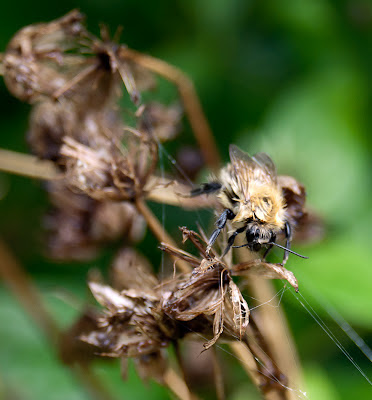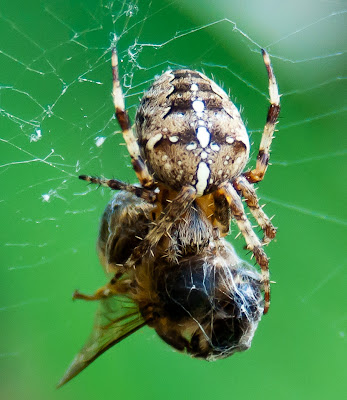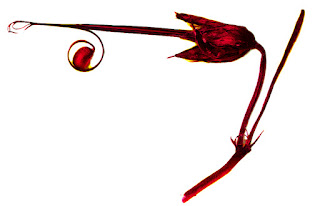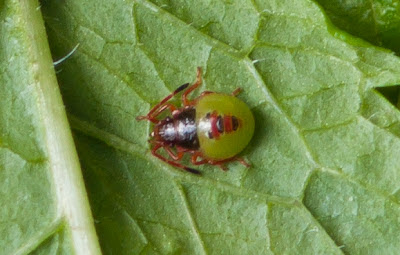Given my annoyance with the ash tree that ‘just won’t die’ in Garden65 I thought I’d take a closer look at the threat to ash trees in the UK that has been recently announced in the news.
The Forestry Commission has produced a page of information about the disease and what measures are being taken to tackle it.
If is officially being called ‘Chalara dieback of ash’, or ‘ash dieback’. Caused by a fungus, Chalara fraxinea, the symptoms are leaf loss, brittle twigs, black spot and canker on the bark, followed by the dieback of the crown. Eventually the whole tree dies. Young trees are most susceptible. Mature trees may be able to withstand a season or two of this onslaught but will succumb in the end. All types of ash trees are affected especially the common ash, Fraxinus excelsior.
The disease has been decimating Europe for last 9 years, with many countries losing the majority of their ash trees. Denmark has lost 90%, Lithuania 60%, Poland 80%. There is a huge worry that this too will happen to Britain’s trees. As the Forestry Commission says, ‘We have no reason to believe that the consequences of its entering the natural environment in Britain would be any less serious.’
Unfortunately the infection has already arrived. In February this year it was found on trees in a nursery in Buckinghamshire that had imported plants from the Netherlands. Some trees had already been sold to 90 customers via mail order. The authorities have followed these up and ordered the destruction of them all. However other infected trees have been discovered in a new planting scheme in a Leicester car park, and various other new plantings even as far as Glasgow.
The problem is that it is not an EU regulated pathogen (because it is so common there) so trees can be imported from the continent without any restrictions or checks on whether the plants are carriers or not. The Forestry Commission and the Food & Environment Research Agency (Fera) (ie. the government) has started a consultation on whether emergency quarantine measures should be imposed to prevent importation, but any legislation to do that would only come into being in a few months time. The Horticultural Trades Association (HTA), the trade association for horticultural industries such as nurseries and garden centres, has recently suggested a voluntary moratorium on imports.
Naturally organisations like The Woodland Trust are outraged by this lack of decisive action. Interestingly I heard of this threat to our ash trees from the Trust publicising their anger. I’m not sure the Forestry Commission have made a general announcement to the public. The Trust points out the ash is the most important broadleaved tree in the UK after oak and birch (another authority has it as the 4th most important). If our native ash is affected as much as those in other countries our woodlands would be changed dramatically.
Unfortunately, as is the way in this modern commercial world, money muddies the water. The HTA has asked for compensation for tree owners who have to cut diseased trees down. Sensibly the Commission has replied:
“It has been the position of successive UK Governments that the risks from plant pests and diseases, like other risks, are part of routine business management, and that the risk should therefore be borne by the businesses concerned. As such, compensation from public resources is not appropriate. It is considered that the limited public resources available are better allocated to surveillance, research and management of pests and diseases to help mitigate any impact on businesses associated with the growing and management of trees.”
A recent article (20th September) in Horticultural Week, a magazine “by horticulturalists for horticulturalists” further explored the monetary concerns of this impending tragedy. The disease is notifiable, but since the trees die gradually without branches suddenly falling off there is a reduced danger to the public. Tree owners (and this includes councils) may then be tempted not to spend money cutting down the tree and disposing of it in the proper controlled way. The article suggests many diseased trees will not be dealt with.
Horticultural Week then gleefully says testing trees for evidence of dieback may be a new lucrative income stream for tree firms!
In the more measured environment of Nordic academia Copenhagen University has been studying the genetics of the disease. They have discovered 5% of ash trees have a high resistance to it, and that resistance is inherited by seedlings of those trees, although only 1-3% produce healthy offspring.
The Danish authorities are dealing with the situation by logging mature trees, not only to prevent the spread of the disease but to harvest the timber before the quality deteriorates. Scientists are trying to set up a system of testing for resistance before they get cut down. Seeds and grafts are being preserved with the aim of restoring the viability of the ash species in the future. They estimate this will be possible in over 10 years time.
The good news is that the ash tree WILL recover, but it will take time.
I wonder what positive steps our authorities are going to take?
Meanwhile I’m keeping an eye on my ash – I’m sure it’s one of the 5%.
Articles:
Forestry Commission
Forestry Commission
The Woodland Trust
Copenhagen University
The Horticultural Week won't let me see the article anymore, so boo to them I'm not going to link to them. Ha!
Source of images

















































